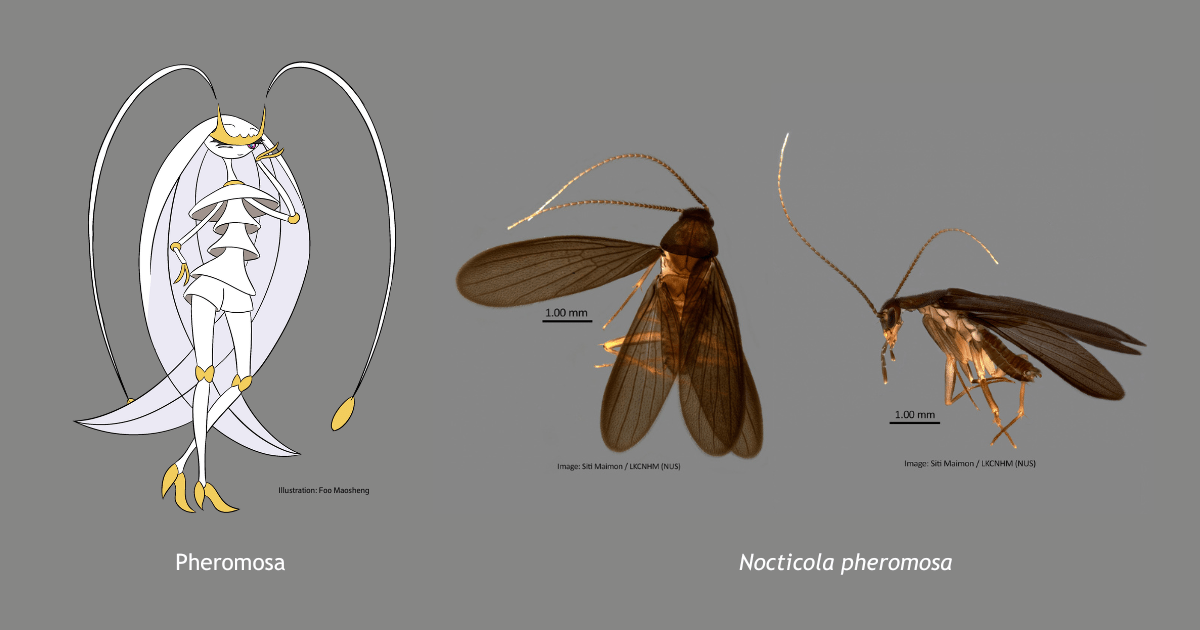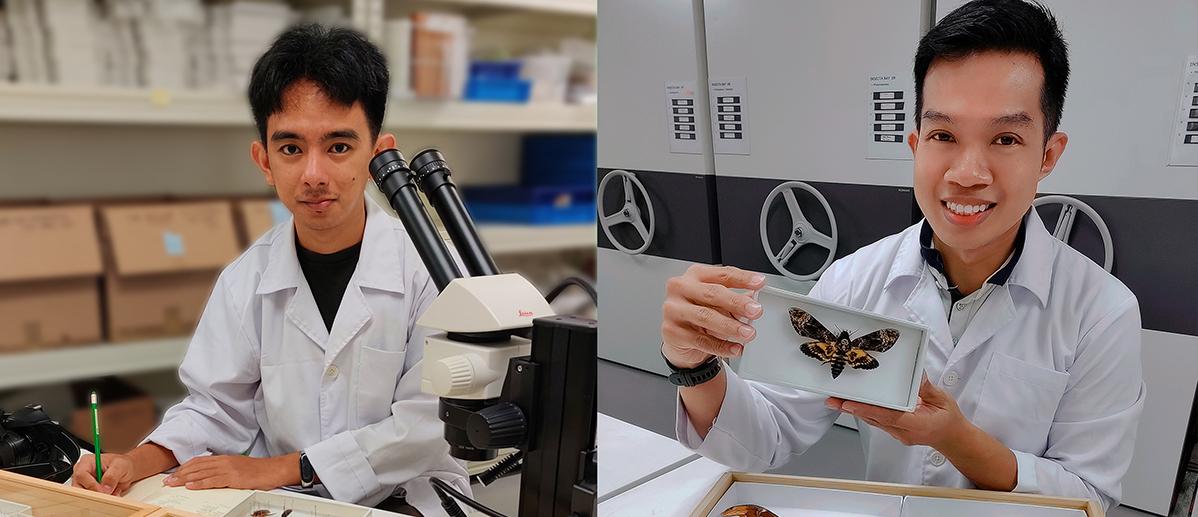News //

What do you get when two entomologists, who also happen to be Pokémon fans, meet? You get Singapore’s first insect species named after a bug-type Pokémon!
Mr Cristian Lucañas of the University of Philippines Los Baños, Museum of Natural History, and Mr Foo Maosheng of LKCNHM, have just published a paper describing a new species of delicate cockroach, Nocticola pheromosa! It was named after the Pokémon, Pheromosa, which was largely inspired by a freshly-moulted American cockroach—hence its pale body. This new species, along with the other Nocticola species, shares features with Pheromosa such as their elongated appendages, reduced coloration and fast speed. (The Nocticola species’ ‘fast speed’, in particular, reflects the speedy game moves of Pheromosa very well!)
This delicate cockroach is the first record for Singapore, and it falls under the family Nocticolidae which has only 32 species known to date. It was collected during an insect survey in 2016 at a nature reserve to uncover the diversity of insects in Singapore. While the exterior of Nocticola pheromosa resembled that of a known species (Nocticola adebratti), it was through dissection of the male specimen’s genitalia that it was found to be a species new to science.
Lucañas, the lead author of the paper, hopes that naming this species after a Pokémon will be “a chance to change people’s perspectives on cockroaches and realise their value as part of a richer biodiversity.” His excitement regarding the buzz about the new discovery is shared by our Museum’s entomologist, Mr Foo, who co-authored the paper.
As noted by Mr Foo, a flurry of attention is often given to other insects like butterflies, beetles and bees that are deemed more charismatic in nature. Cockroaches, on the other hand, face an ongoing stigma as pests that are viewed as off-putting. However, this delicate cockroach is not one to be overlooked! In fact, one might even appreciate how cockroaches administer their own kind of care to the environment—some assisting pollination while others facilitate nutrient cycling in the ecosystem.

“In future, we hope to look for the female counterpart of this species to compare the similarities and differences between both sexes,” Mr Foo shared when asked about their next step. Looks like the adventure does not end here for these two Bug Catchers!
Read the full paper here, or check out more on the discovery as covered by The Straits Times here.